With the motto „Sedus. Haltung seit 1871“, Sedus is launching its communication campaign for its 150th anniversary this year. The associated logo of the tree is a representation and symbol of the essence and uniqueness of the company: consistent, close to nature, natural and caring.
150 years – Sedus is celebrating its birthday
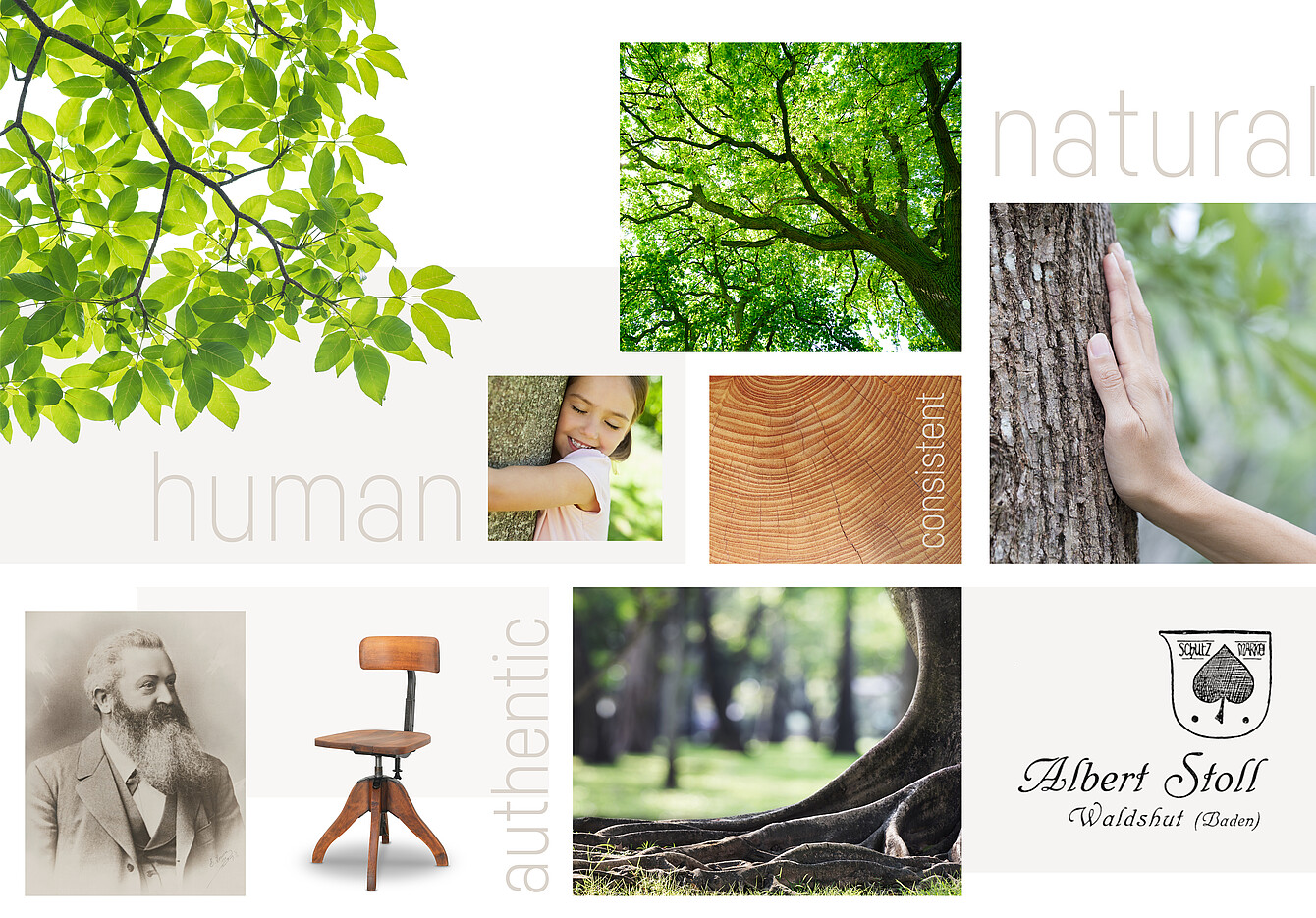
With an attitude, a vision, a doer mentality and courage, Albert Stoll I laid the foundations in 1871 for what Sedus is today. 150 years of company history – that's 150 years of great ideas, accompanied by groundbreaking innovations, full of excellent products and solutions. It is a time marked by inventors and motivated teams who have conquered new horizons. From the production of the first office swivel chair in Europe to complete office furnishings. The unique combination of tradition, values and ergonomics, as well as close cooperation with employees, partners and customers, precisely demonstrate the attitude that makes Sedus so special – and this has been the case since 1871.
I'm more interested in the future than in the past, because the future is where I intend to live.
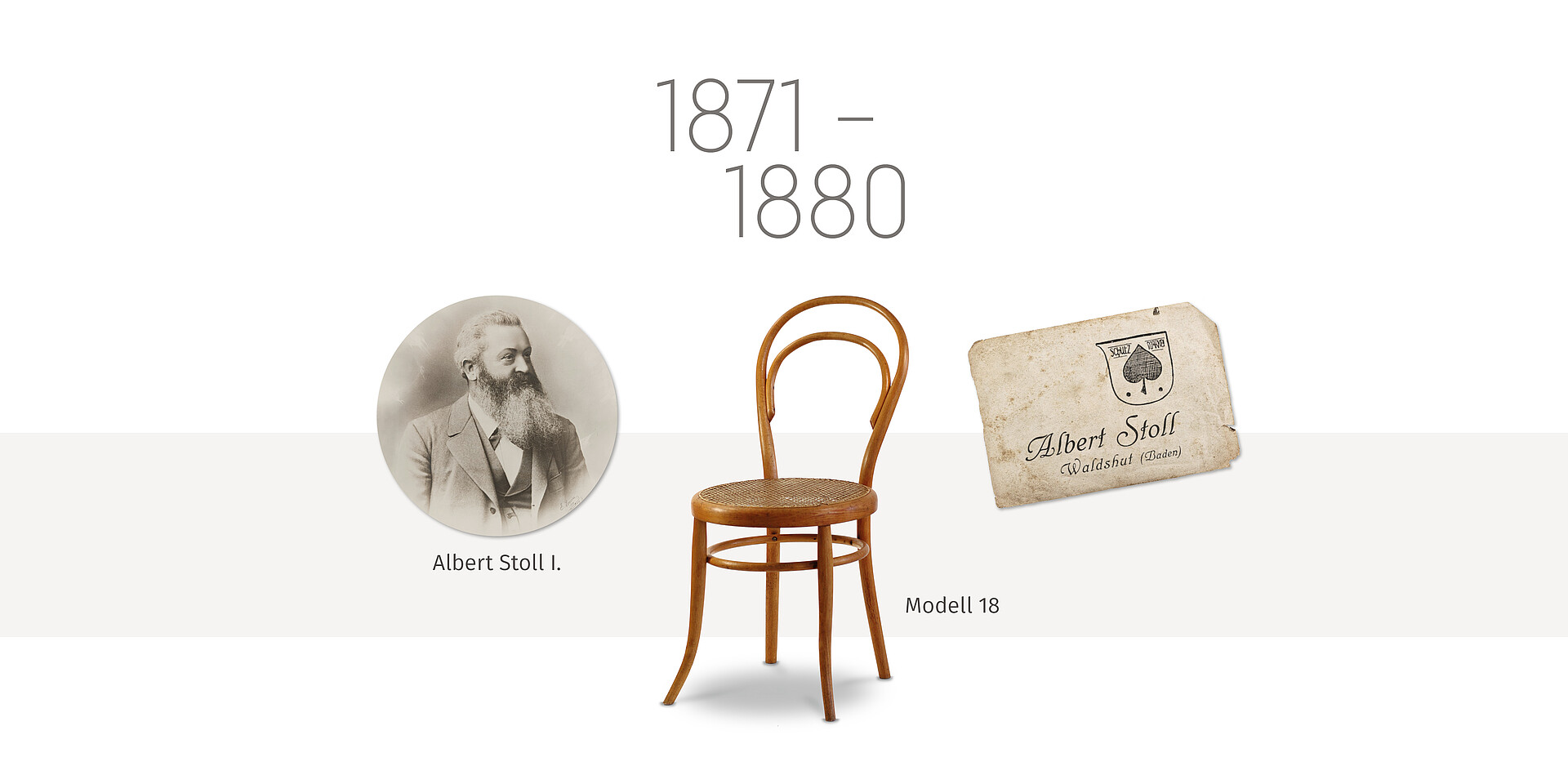
1871
Albert Stoll I. and Max Klock establish the chair factory, “Stoll & Klock” in Waldshut. After Klock leaves in 1879, the company simply becomes known as “Albert Stoll”.
Around 30 employees make chairs out of bent wood. Beechwood, the most important raw material, grows very close by in the Rhine Valley. To make wickerwork chairs, Albert Stoll I. creates new jobs and hires homeworkers.
1879
The “Albert Stoll” company uses bent wood, which is created by steaming wood, to make various models of chair, including the bent wood chair 18 model. It is a four-legged chair with a backrest that has an additional connection to the seat frame. Due to its total construction it is very stable.
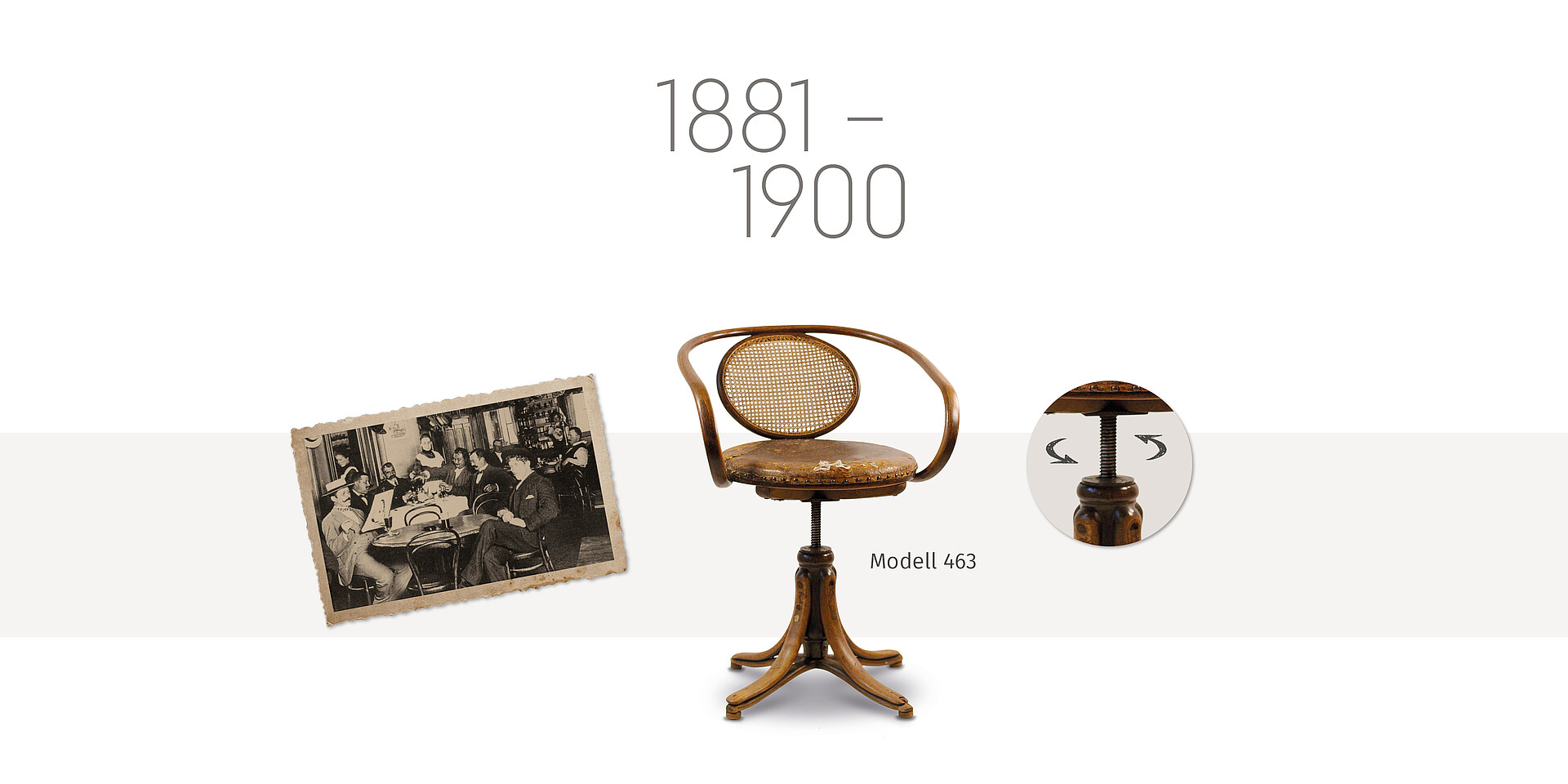
1882
Albert Stoll II. is born in Waldshut.
1890
The model 463, a four-legged bent wooden chair, is made. The post-reinforced threaded spindle retainer consists of four bent leg supports. The turned column with threaded insert provides the height and rotation adjustment. The chair has a gently shaped seat shell, while the armrests also form the top fixture for the oval wickerwork backrest.
1897
Albert Stoll I. dies. His wife, Bertha, (known as “the chair maker”), continues the business.
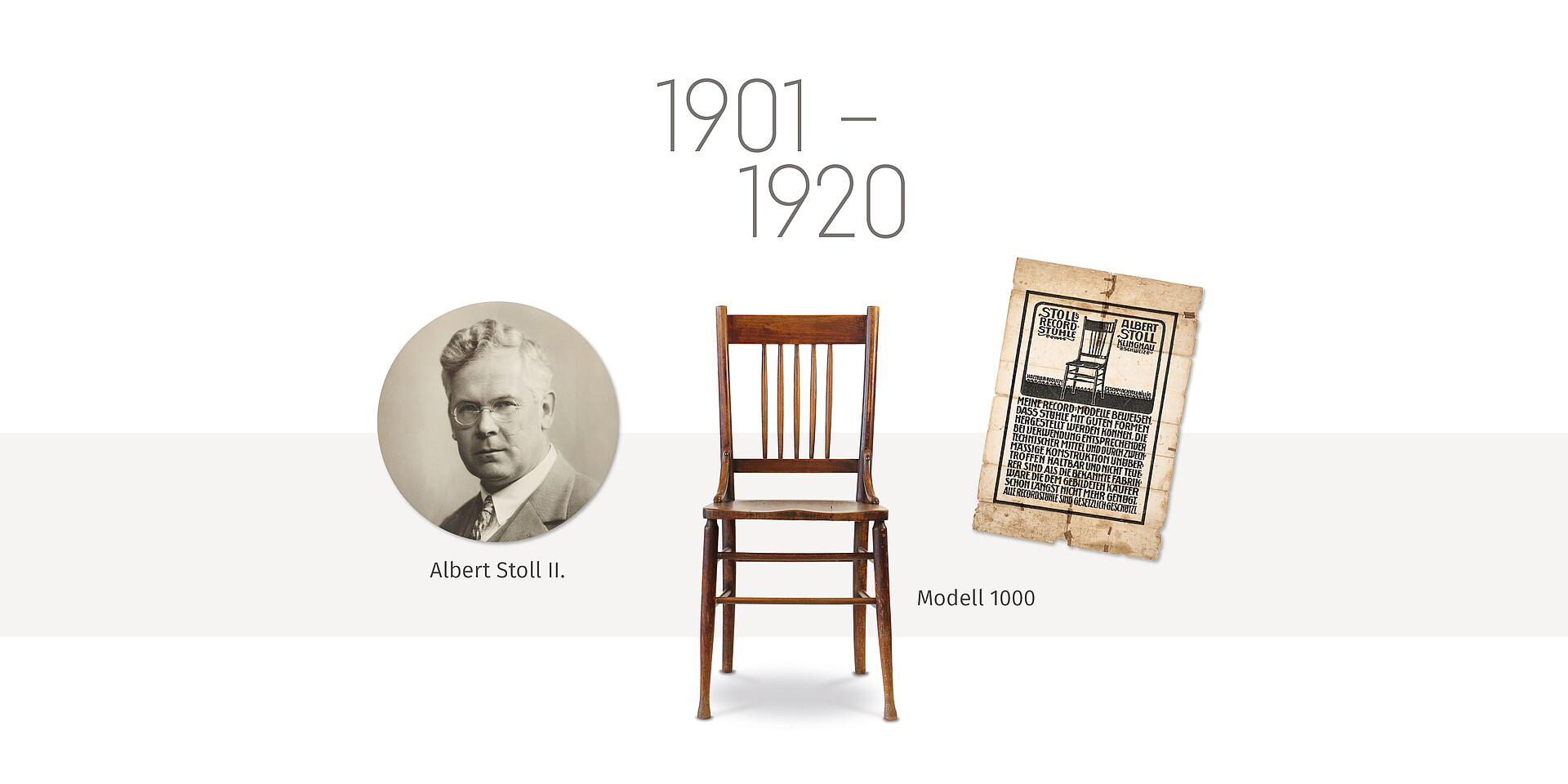
1910
After completing his school-leaving exams in Waldshut and studying mechanical engineering in Karlsruhe, Albert Stoll II. goes to the USA to continue his studies at the age of 28. He brings back a few ideas with him that influence the company’s way of working in the long term.
1912
His son, Christof Stoll, is born in Waldshut. The age of industrial production arrives. Thanks to the machines Albert Stoll II. bought in the USA, a lot of the time-consuming manual work is rendered unnecessary. The spoke-back chairs produced at this time are also known as “record chairs”. Due to their horizontal and vertical rungs they are very solid.
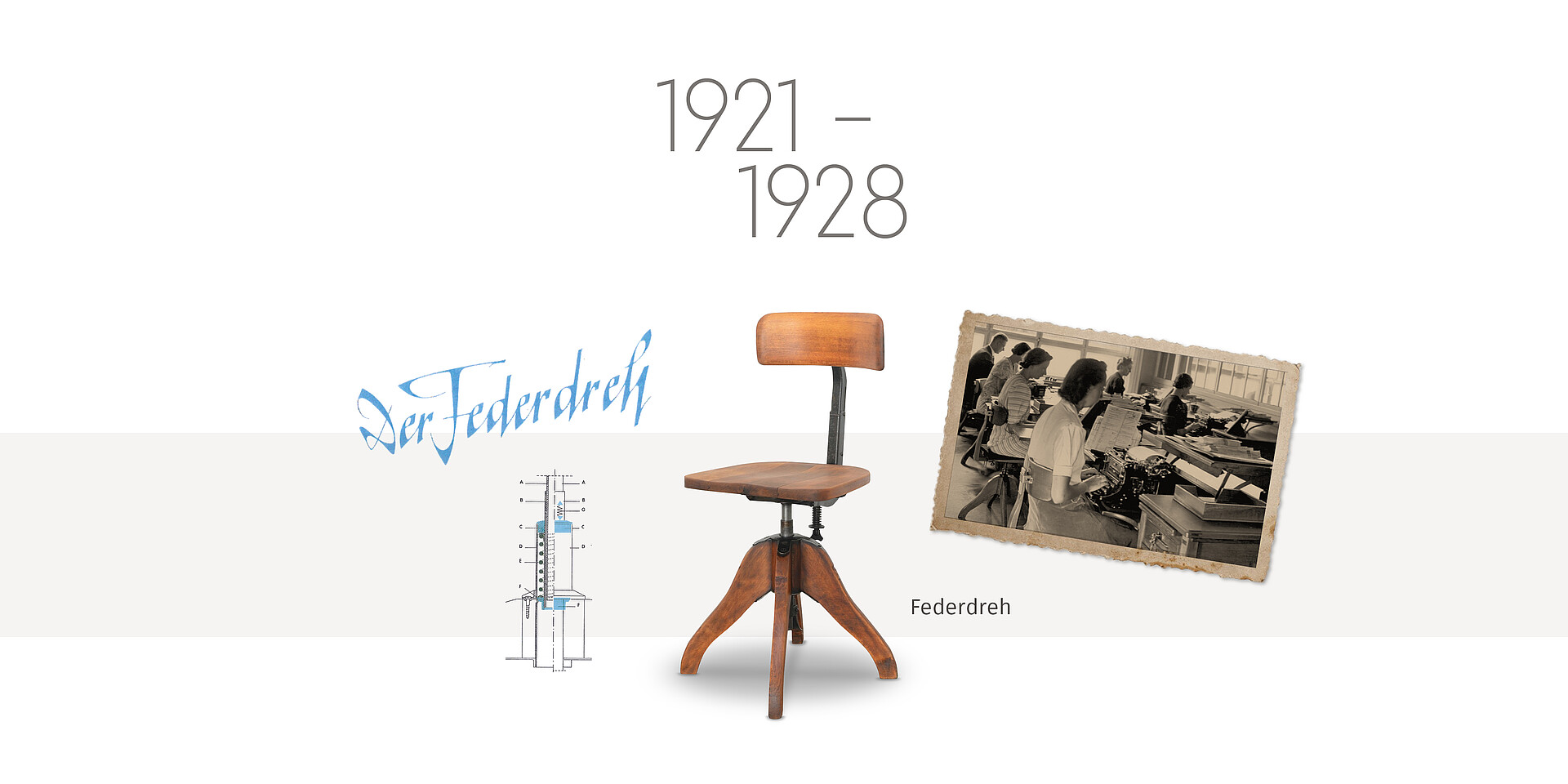
1926
Albert Stoll II. invents spring swivel technology. It is used to make the world’s first spring and rotatable office chairs, with the central seat spring disconnected from the rotary mechanism. Stoll showcases its innovation at the Leipzig Trade Fair and is granted the patent for it. From today’s perspective, Stoll is considered to be the pioneer of modern office chair technology.
The “Stoll button” is introduced as a trademark in the same year.
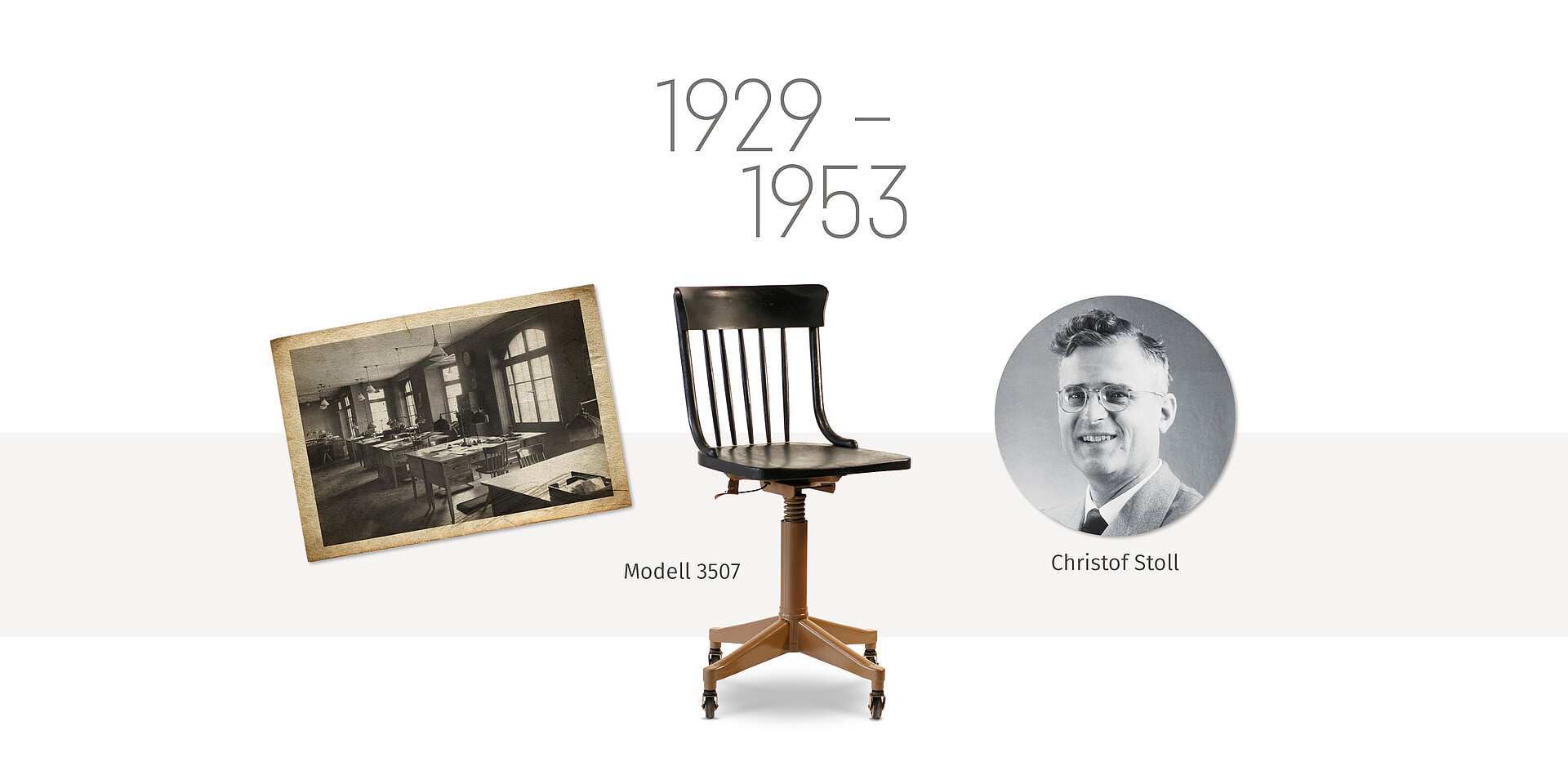
1929
The use of metal parts makes the chairs more agile. This results in more dynamic use and ergonomic adjustment options. The model 3507, a spring swivel variant, has a base structure with individual sheet steel legs that is spot-welded to the post. The top part comes from the Record series, while the Bowden cable enables height adjustment.
1937
Albert Stoll II. dies unexpectedly at just 54 years old. Obituaries describe him “as a highly driven and visionary character”. Three of his four sons continue to run the chair factory. While Albert Stoll III. heads up the factory in Koblenz, Christof and Martin Stoll run the Waldshut company together until 1958.
1953
Christof Stoll introduces profit participation for employees – the company’s most important asset. Similar models are adopted by other companies years later. Christof Stoll plays a pioneering role in his commitment to his employees.
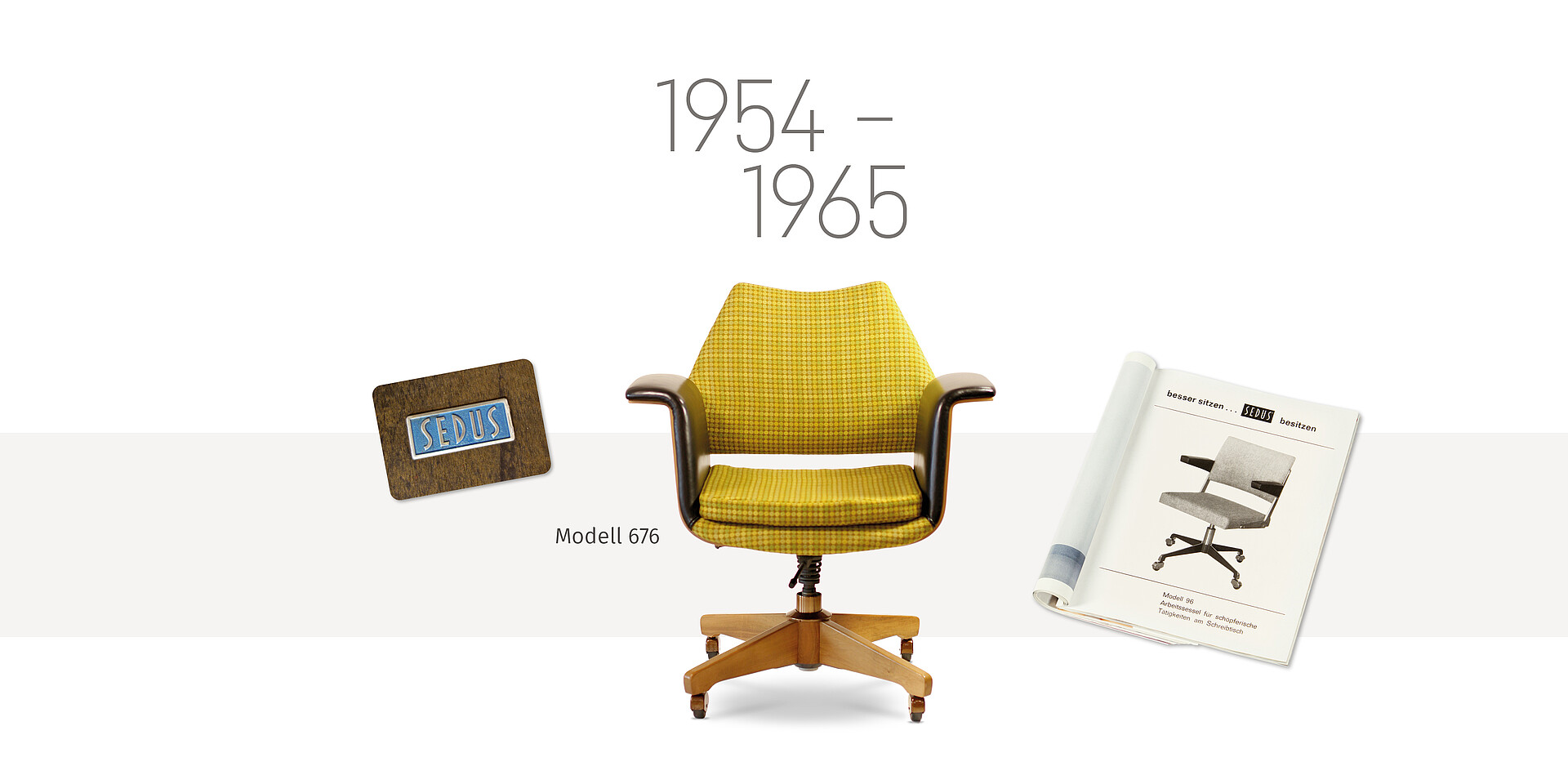
1958
1958 Christof and Martin Stoll split up the family enterprise to create two new companies: Christof Stoll KG in Waldshut and Federdreh-Stuhl- fabrik run by Martin Stoll in Tiengen. As a result of the separation, Christof Stoll introduces the Sedus trademark to differentiate his products.
1962
The model 676, a desk chair, heralds the start of moulded chairs made from plywood. It has a solid wood, four-legged, drawbar mechanism, NEREG seat mechanism and preformed armrest pads.
1964
The design shifts towards slimmer, more delicate models that provide a major economic upturn. Wooden chairs are still made too, but are ultimately replaced.
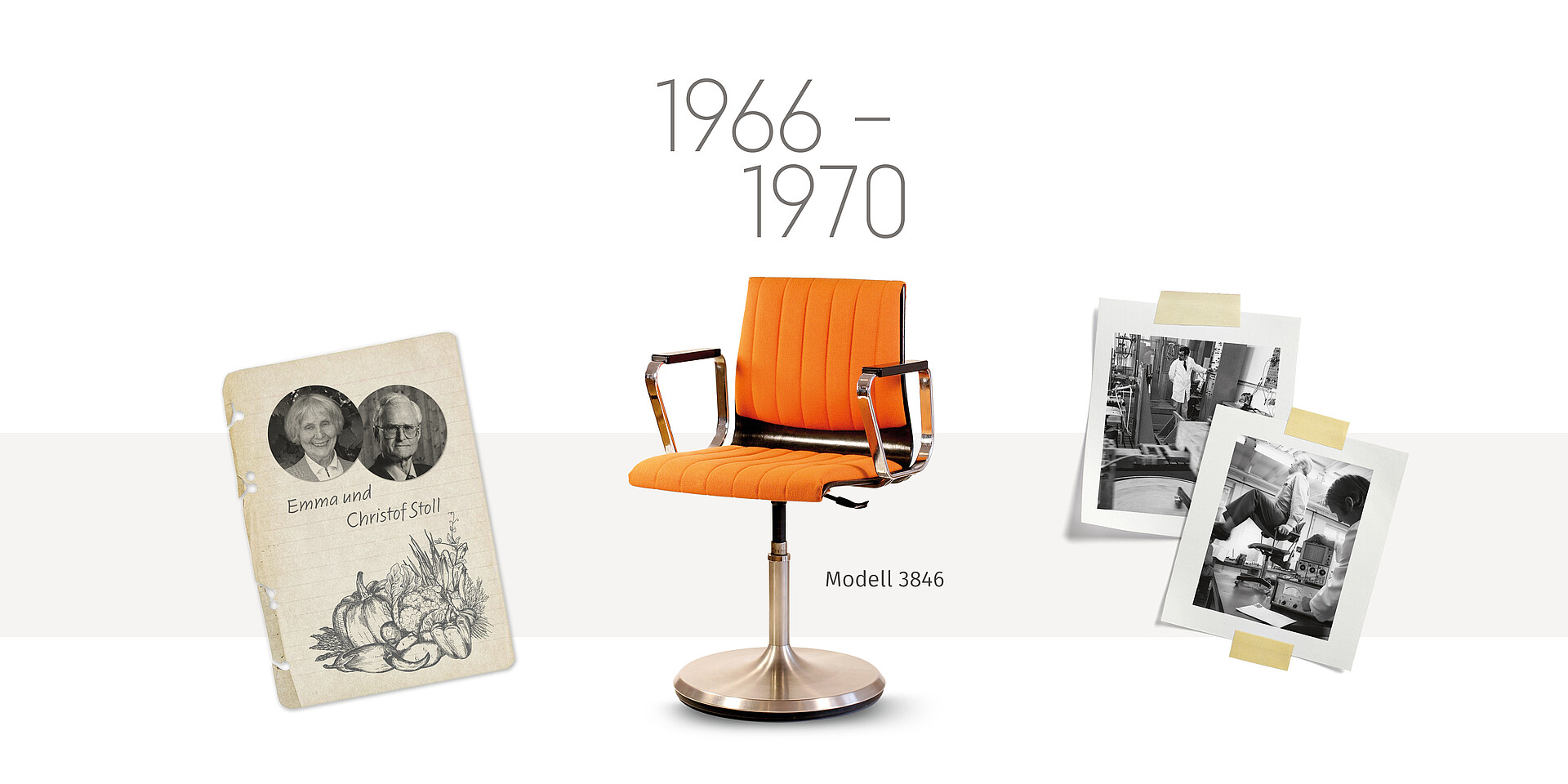
1966
Together, the Stolls devote their energies to promoting healthy nutrition and open the company canteen. It still prepares meals using whole foods today.
1968
The model 3846, an office chair with a round stainless steel base, is launched on the market.
1969
As a consequence of the company’s growth, the operational departments are gradually moved to the Dogern production facilities. Just one year later, Christof Stoll sets up a development and testing department, before going on to create the largest and most modern test laboratory in the industry the year after that. Up until 1987, a total of eight sales subsidiaries are established in Europe.
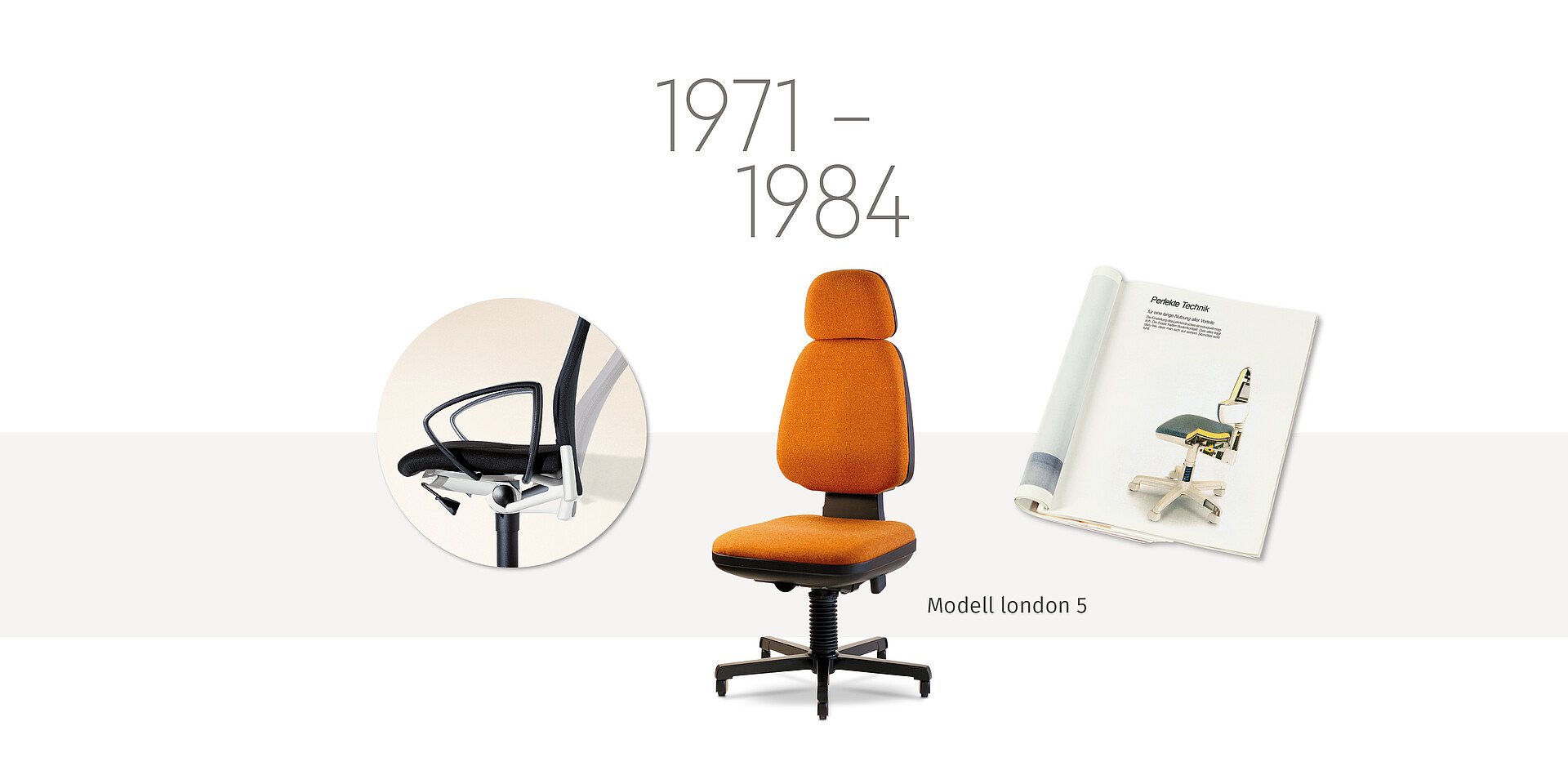
1973
The launch of the Similar mechanism ushers in the next generation of dynamic seating solutions. This mechanism causes the angle between the seat and the backrest to change in a precisely defined ratio, making it easy for users to stretch out. The permanent contact backrest also provides back support if the user changes sitting positions.
1979
The company records its internal ecology rules in a brochure and installs a olvent-free and largely residue-free powder coating system.
1982
The model london 5 is produced. The Similar mechanism is integrated in the seat cover, and the backrest is height adjustable. The aluminium base is powder-coated, and the upholstery fabric is in a colour typical of the 1980s. Only the prototype has the attached headrest.
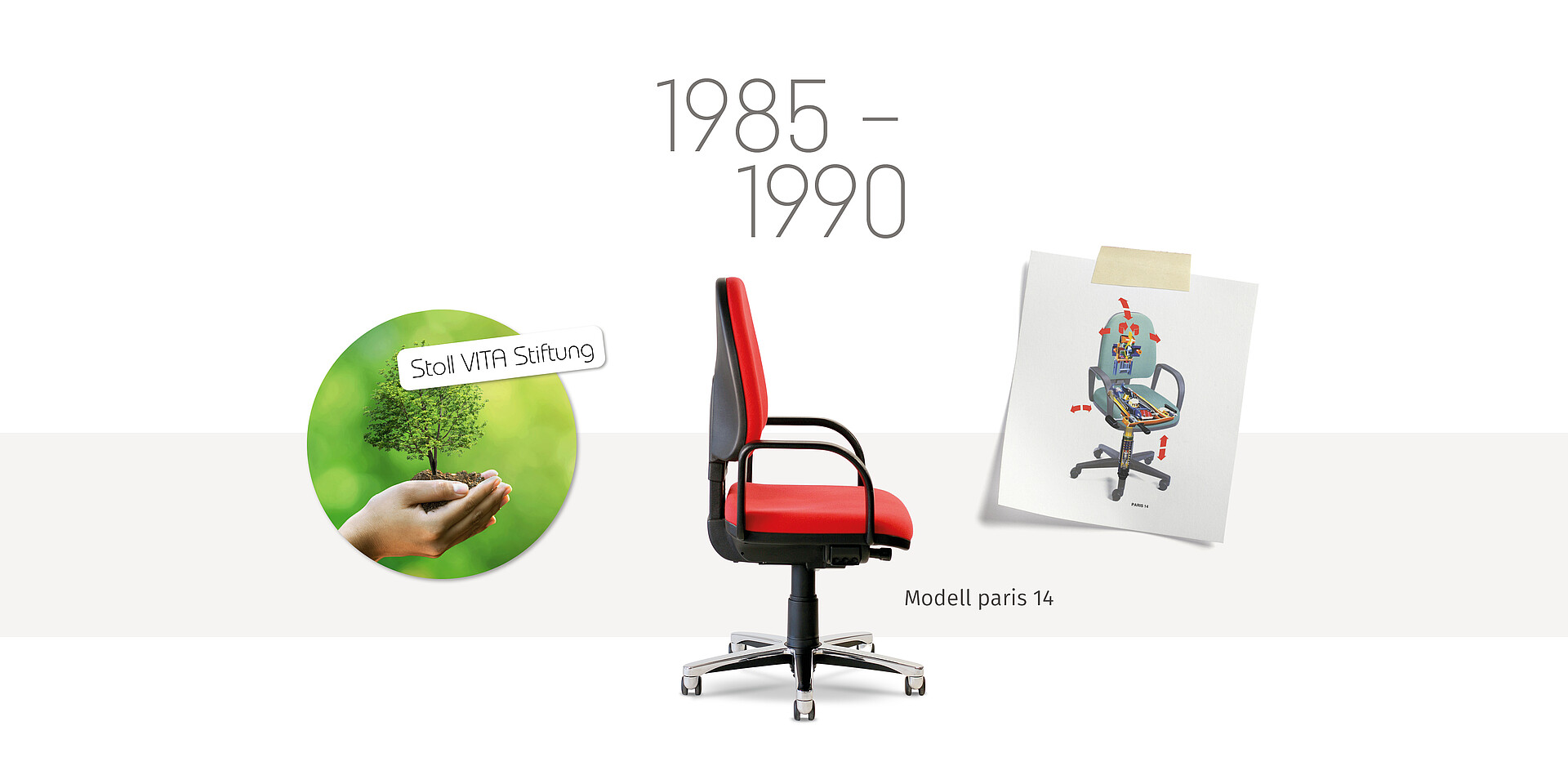
1985
To arrange transfer of the company’s ownership and continue their commitment to the environment, Emma and Christof Stoll set up the Stoll VITA Foundation. It is dedicated to promoting scientific research, public health, education, flora and fauna conservation and environmental protection.
1988
The model paris 14 is launched onto the market. It has a steel base with double-castor leg ends, a Similar mechanism and a backrest with dorsokinetic bearing and solid plastic armrests. It is sold over a million times.
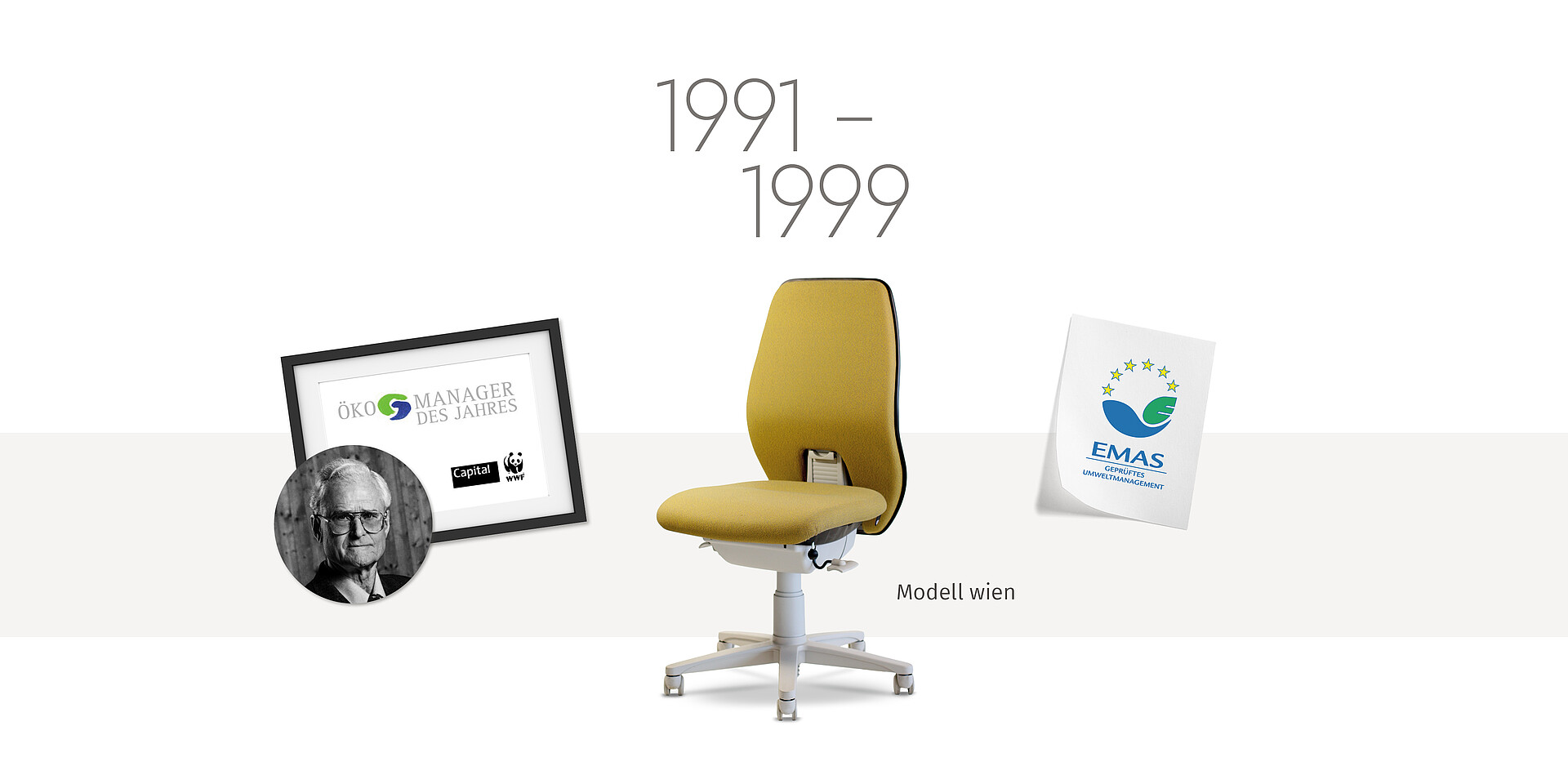
1993
In recognition of his commitment to corporate environmental protection, Christof Stoll is awarded the title of “Eco Manager 1993” by the business magazine Capital and the environmental conservation foundation WWF Deutschland. Sedus is also one of the first companies in Baden-Württemberg to introduce an environmental management system.
1995
The existing limited partnership is initially converted to Sedia Stoll GmbH, before ultimately being changed to Sedus Stoll AG. Sedus is also the first furniture manufacturer in Germany to receive EMAS I certification.
1996
Model wien, the first series of models designed using CAD software, is launched on the market.
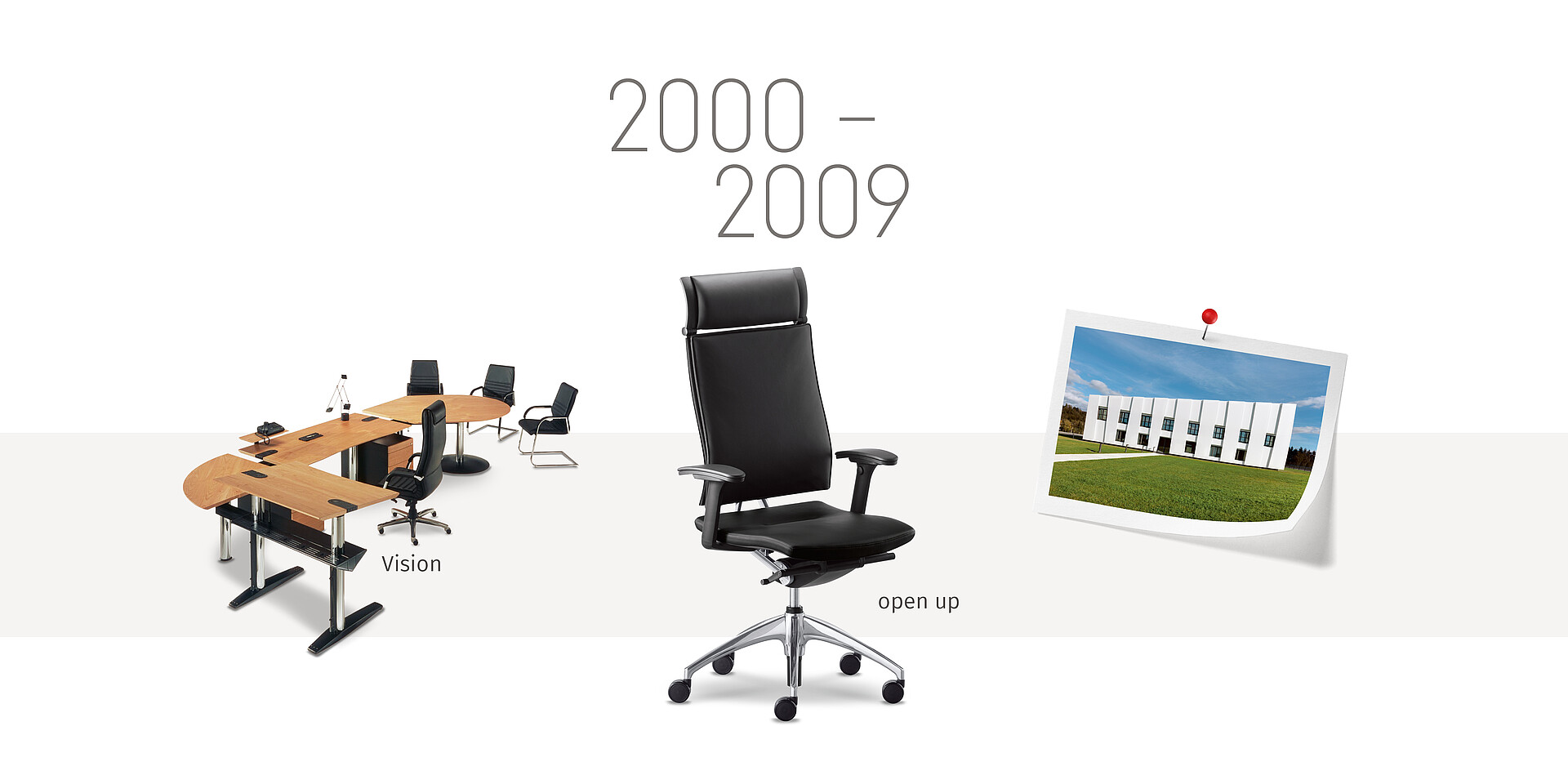
2000
The Sedus open up, a model that has enjoyed successful sales even up until now, is launched on the market.
2002
By acquiring Gesika Büromöbel GmbH, Sedus becomes a complete provider for the office environment. The furnishing concepts focus on people and their health, wellbeing and productivity.
Christof Stoll dies one year later at the age of 90.
2009
The development department is relocated from Waldshut to Dogern.
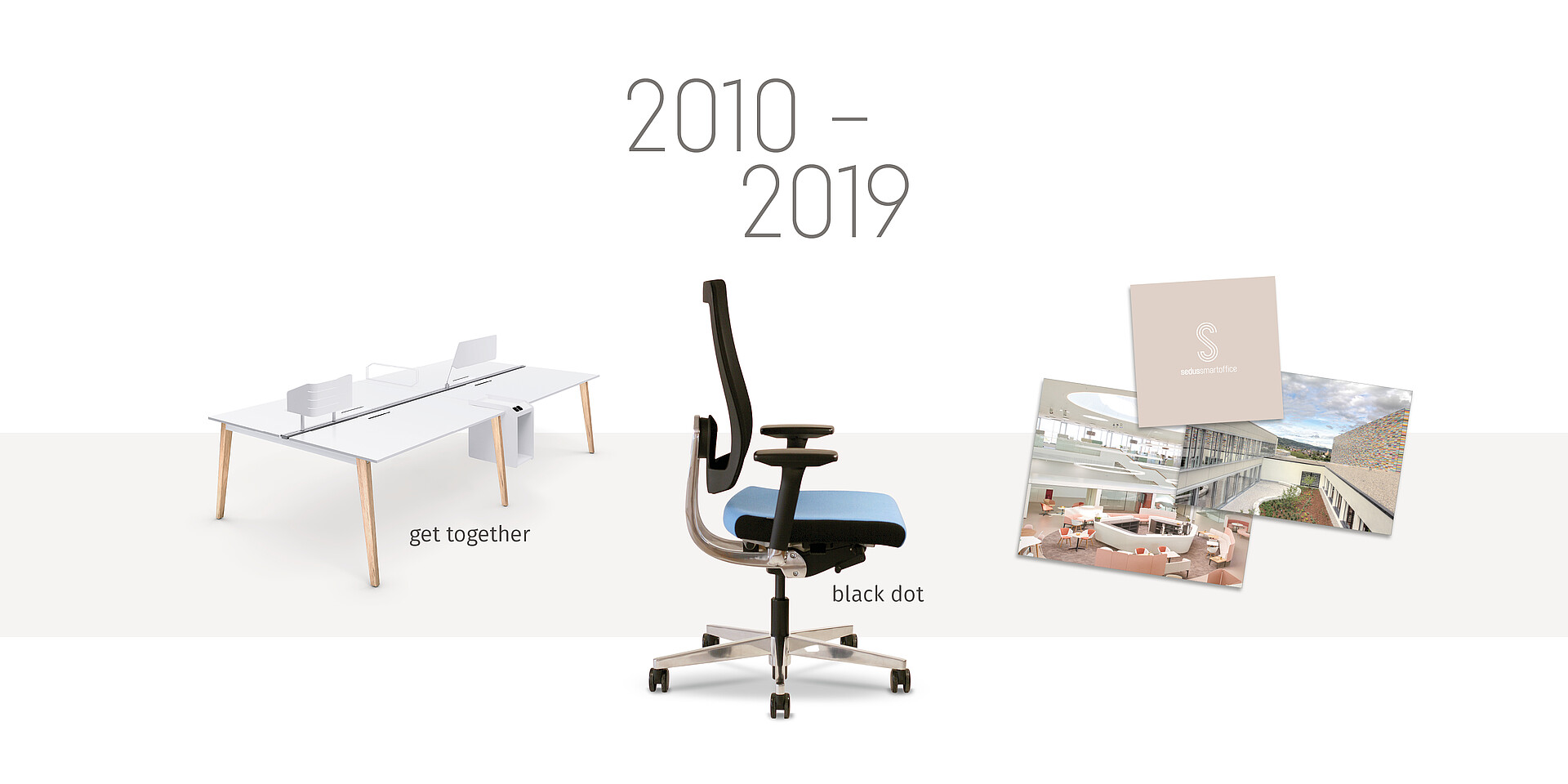
2010
The black dot net office swivel chair is launched on the market. It continues to impress today with its timeless design and its technical features. This is also the year that Sedus becomes the first office furniture manufacturer to receive EMAS III certification.
Emma Stoll dies at the age of 90.
2018
The get together table series is added to the product range. Due to the bench and team workstation design, the non-territorial workplace design is becoming increasingly important. The optionally selectable wooden table legs also bring a feeling of cosiness into the office.
The company headquarters are relocated
to Dogern. The connecting road is renamed Christof-Stoll-Straße in connection with this change. In the spring of 2019 the employees move into the newly built Sedus Smart Office.
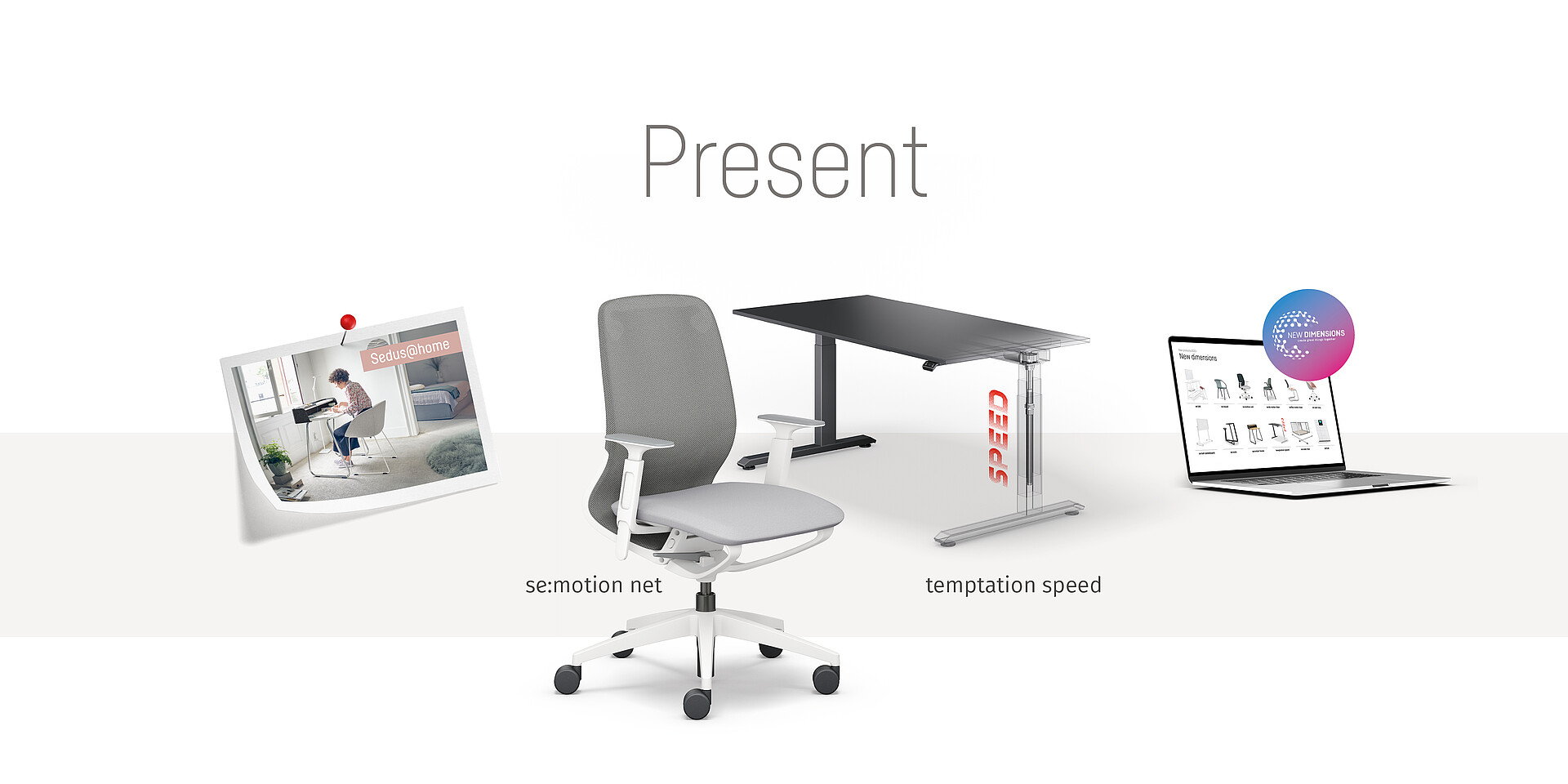
2020
The Corona pandemic accelerates the establishment of the home office. Sedus develops products that are optimised for the workplace within the user's own four walls.
Due to the Corona pandemic, the Orgatec trade fair in Cologne is cancelled. For the first time, Sedus presents its new products online, at the "New Dimensions" live broadcast – a particular highlight is the presentation of the se:lab furniture system.
The se:motion net swivel chair, a further developed version of the se:motion, is inspiring with its comfortable knitted membrane backrest and modified armrests. Sedus also presents the temptation speed as the world's fastest motorised desk. The height can be adjusted at a speed of 150 mm per second.

